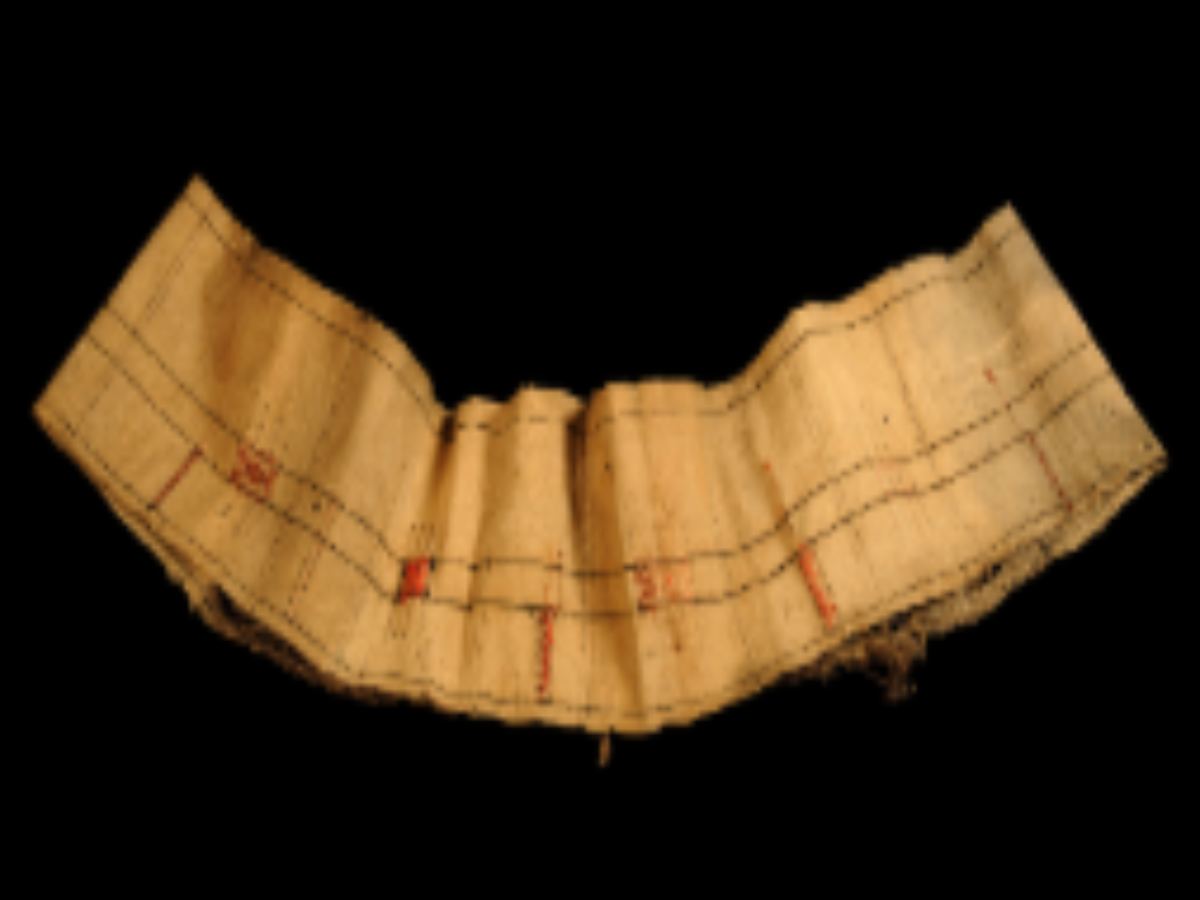State
Tribe Name
Art Type
short description
According to the anthropologists, "A symbolic feature related to weaving among the Naga tribes is this cotton component of the loom." Indeed, this is an absolutely vital component: it's generally understood as a kind of private portion of a loom, though one that frequently goes overlooked. The Hannah added the following: "This is generally a part of the warp setup-in normal usage, it falls under rigid and pretensions into the nucleuses-spreads stretched across the whole bar of the loom. In many traditional Naga looms, especially the backstrap ones, parts used in tying, tensioning, or supporting the looms using handspun cotton during the weaving process." Most attach this cotton part in the loom to the part of the weaving which normally depends upon the weight of the fabric and thus remains suspended from it. These cotton parts work to stabilize and balance the loom along with the right tautness and alignment of threads to create intricate designs.
Thumbnail

Filter Postion
Left
Filter Background
Off
Theme
Filter Header Image

content
Image

description
According to the anthropologists, "A symbolic feature related to weaving among the Naga tribes is this cotton component of the loom." Indeed, this is an absolutely vital component: it's generally understood as a kind of private portion of a loom, though one that frequently goes overlooked. The Hannah added the following: "This is generally a part of the warp setup-in normal usage, it falls under rigid and pretensions into the nucleuses-spreads stretched across the whole bar of the loom. In many traditional Naga looms, especially the backstrap ones, parts used in tying, tensioning, or supporting the looms using handspun cotton during the weaving process." Most attach this cotton part in the loom to the part of the weaving which normally depends upon the weight of the fabric and thus remains suspended from it. These cotton parts work to stabilize and balance the loom along with the right tautness and alignment of threads to create intricate designs.
The hooped cotton part serves as the primary medium of weaving for the Naga woman. Since women form the majority of mammoth weavers in the household of Naga tribes, the part serves both functional and symbolic features. In particular, it is indicative of the technical know-how handed down across generations as much as the dependence of the tribe on materials that are available from their environment. The inclusion of cotton that was pulled and processed right within the region uses a way of life that is self-sustaining for the Naga people and has extra cultural significance on the part of textile weaving in their everyday and ceremonial life
The hooped cotton part serves as the primary medium of weaving for the Naga woman. Since women form the majority of mammoth weavers in the household of Naga tribes, the part serves both functional and symbolic features. In particular, it is indicative of the technical know-how handed down across generations as much as the dependence of the tribe on materials that are available from their environment. The inclusion of cotton that was pulled and processed right within the region uses a way of life that is self-sustaining for the Naga people and has extra cultural significance on the part of textile weaving in their everyday and ceremonial life
Image Mode
landscape
promoted
On
Verified
Off
